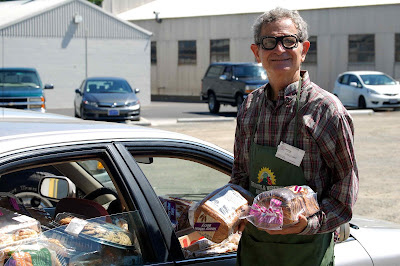 |
| Photo source |
Serve this soup with a good sour dough french or a dense whole wheat bread.
Thanks to Julia Martinez for sharing her broccoli soup recipe and thoughts on healthy cooking.
Cleo, Food Bank volunteer
Ingredients:
1 bunch of broccoli, stems sliced and florets chopped into smaller pieces
2 tablespoons unsalted butter or olive oil
1 medium onion, sliced
1 clove garlic, smashed
Pinch dried thyme leaves and or other herbs as desired
1/2 teaspoon salt, plus more as needed
2-4 cups chicken or vegetable broth
1 medium onion, sliced
1 clove garlic, smashed
Pinch dried thyme leaves and or other herbs as desired
1/2 teaspoon salt, plus more as needed
2-4 cups chicken or vegetable broth
Milk, dairy or non-dairy
Freshly ground black pepper
1 russet potato, peeled and dicedShredded cheddar cheese
Directions:
-Add the onion and garlic and cook until translucent, about 5 minutes.
-Add the broccoli (and potato, if using), herbs of choice, salt, and enough broth to cover the vegetables and bring to a boil.
-Adjust the heat to maintain a gentle simmer and cook uncovered until the broccoli is tender but not overcooked, about 5-7 minutes.
-Puree the soup in batches in a blender or with an immersion blender.
-Return soup to the pot and add milk to the puree, keeping the consistency fairly thick.. Bring to a simmer, taste, and season with salt and pepper.
Serve with the shredded cheddar cheese as a topping.Makes 4 to 6 servings.
























